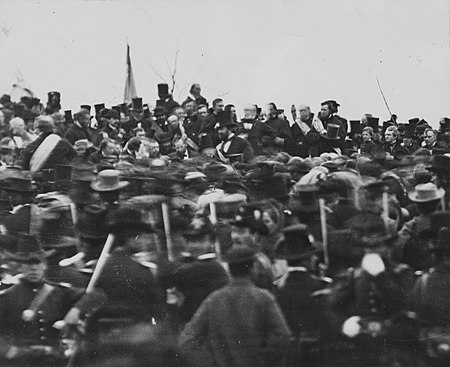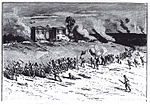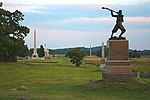Consecration of the National Cemetery at Gettysburg
1863 establishments in Pennsylvania1863 in Pennsylvania1863 in the United StatesCemeteries in PennsylvaniaGettysburg Battlefield ... and 4 more
History of Adams County, PennsylvaniaNovember 1863 eventsPennsylvania in the American Civil WarPresidency of Abraham Lincoln

The Consecration of the Soldiers' National Cemetery was the ceremony at which U.S. President Abraham Lincoln delivered the Gettysburg Address on November 19, 1863. In addition to the 15,000 spectators, attendees included six state governors: Andrew Gregg Curtin of Pennsylvania, Augustus Bradford of Maryland, Oliver P. Morton of Indiana, Horatio Seymour of New York, Joel Parker of New Jersey, and David Tod of Ohio. Reporters present included Joseph Gilbert (Associated Press), Charles Hale (Boston Advertiser),: 14 John Russell Young (Philadelphia Press); and Cincinnati Commercial,: 13 New York Tribune, & The New York Times reporters.: 15
Excerpt from the Wikipedia article Consecration of the National Cemetery at Gettysburg (License: CC BY-SA 3.0, Authors, Images).Consecration of the National Cemetery at Gettysburg
National Cemetery Drive,
Geographical coordinates (GPS) Address Nearby Places Show on map
Geographical coordinates (GPS)
| Latitude | Longitude |
|---|---|
| N 39.819767 ° | E -77.231217 ° |
Address
Soldiers' National Monument
National Cemetery Drive
17325
Pennsylvania, United States
Open on Google Maps











